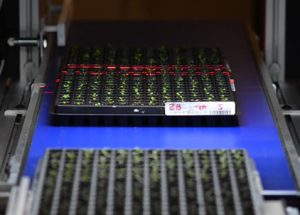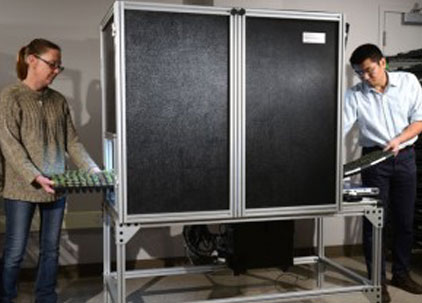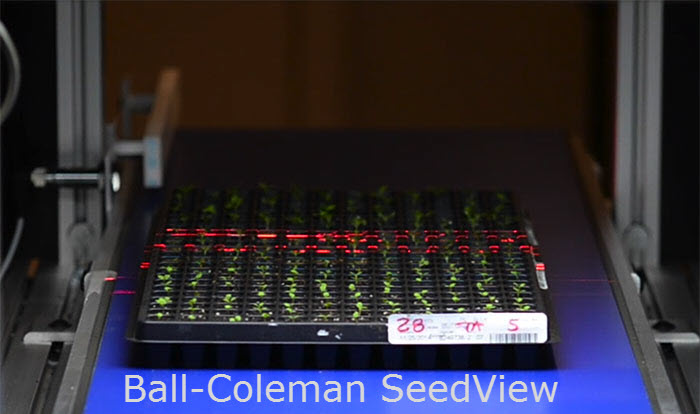Seed Inspection System
Automated Seed Inspection
Our advanced imaging software works to provide the ultimate in automated seed inspection and seedling inspection systems.


Fast
SeedView uses lasers and cameras to measure seedling samples while they are moving through at up to 3.5 cm/second. Depending on the density of the seedling, it can evaluate up to 13 seedlings/second. A standard seedling tray is scanned in only 36 seconds!
Easy
It can be easily configured to meet your needs.
Available options include a base stand and a conveyor system that moves you from a two-person to a single-user operation, saving you time and money.
Flexible
It can evaluate individual germinated seed or seedlings regardless of the media it is sown in or the environmental conditions. Seeds can be evaluated in soil or blotter media on a grid pattern in standard trays or blotter boxes.
Cost Effective
This germination testing is objective, reproducible and provides more data than traditional methods.
Saves labor costs for reading germination tests and saves time with remote data evaluation.
How It Works
Fast, Accurate Data Collection
Our state-of-the-art technology and advanced image acquisition and analysis software work together to provide the ultimate in seed inspection.

Need a Consultation?
Save Time and Money with an Engineered Solution from Sciotex
© Copyright 2023 by Coleman Technologies, Inc. DBA Sciotex
